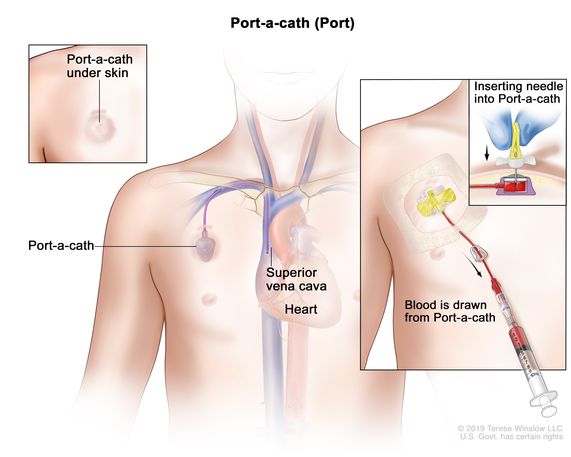port
(port)
A device used to draw blood and give treatments, including intravenous fluids, blood transfusions, or drugs such as chemotherapy and antibiotics. The port is placed under the skin, usually in the right side of the chest. It is attached to a catheter (a thin, flexible tube) that is guided (threaded) into a large vein above the right side of the heart called the superior vena cava. A needle is inserted through the skin into the port to draw blood or give fluids and other treatments. A port may stay in place for many weeks, months, or years. Also called port-a-cath.
